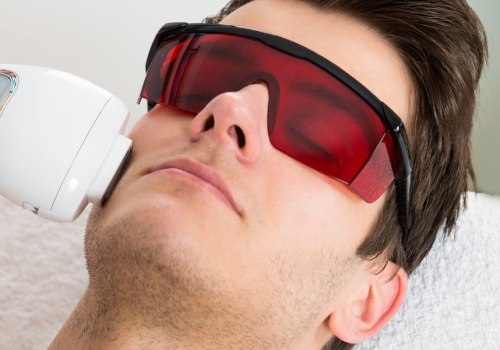The long-term effects of laser therapy, including the potential for an increased risk of cancer, have not been studied. Some researchers have observed changes in atypical moles (dysplastic nevi) after laser hair removal. Therefore, they suggest caution in the use of cosmetic laser therapy for people with a personal or family history of skin cancer or atypical moles, until further investigations determine whether these changes may be malignant or not. Laser hair treatment is very safe when performed by an experienced doctor in an accredited clinic. . Therefore, they suggest caution in the use of cosmetic laser therapy for people with a personal or family history of skin cancer or atypical moles, until further investigations determine whether these changes may be malignant or not. Laser hair treatment is very safe when performed by an experienced doctor in an accredited clinic.
There is no evidence that laser treatment can increase the risk of developing any type of cancer or any other disease. We have been using lasers to remove unwanted hair for many years, so we know that there are no long-term effects for our patients either. So far, no research has shown that light energy from hair removal lasers can cause cancer. But there are some risks involved, such as redness, scarring and discoloration in the treated area, Bowe said.
Laser hair removal can be dangerous in inexperienced hands. Burns, permanent changes in skin color, and scarring can occur. You can greatly reduce the risk of potential side effects by having your treatment performed by a doctor who is extremely trained in the use of lasers and who has in-depth knowledge of the skin. The AAD recommends that you choose a board-certified dermatologist to perform laser treatments.
The pulses of light energy used in laser hair removal treatments are only designed to heat and destroy hair follicles. During laser hair removal, the laser emits a light that is absorbed by the pigment (melanin) in the hair. The laser treatments performed at the Dermadoc clinic are aimed at the hair follicles, so they do not penetrate deep into the skin or have any effect on the surrounding skin. Beware of spas, beauty salons, or other facilities that allow non-medical staff to perform laser hair removal.
Laser hair removal is not recommended for eyelids, eyebrows, or surrounding areas, due to the possibility of serious eye damage. The risk of skin damage is greatest when there is little contrast between hair and skin color, but advances in laser technology have made laser hair removal an option for people with darker skin. To understand the potential risks of laser hair treatment, it's worth taking a moment to think about how it works. Nowadays, laser hair removal is a treatment option for patients who have light hair and fair skin and patients who have dark skin.
Laser hair removal is most effective for people who have fair skin and dark hair, but it can be successfully used on all skin types. Therefore, a contrast between hair color and skin, dark hair and fair skin, results in the best results. Several laser hair removal treatments are needed for initial hair removal, and maintenance treatments may also be needed. If you are interested in laser hair removal, choose a doctor who is certified in a specialty, such as dermatology or cosmetic surgery, and who has experience in laser hair removal for your skin type. Laser hair removal is most effective for people who have fair skin and dark hair, but it can be successfully used on all skin types. Therefore, a contrast between hair color and skin, dark hair and fair skin, results in the best results. Several laser hair removal treatments are needed for initial hair removal, and maintenance treatments may also be needed. If you are interested in laser hair removal, choose a doctor who is certified in a specialty, such as dermatology or cosmetic surgery, and who has experience in laser hair removal for your skin type.
Before laser hair removal, schedule a consultation with your doctor to determine if this is a right treatment option for you. As powerful as ionizing radiation is, the Food and Drug Administration (FDA) claims that laser energy in hair removal procedures uses non-ionizing radiation. Since laser surgery (such as cosmetic laser treatments) only uses non-ionizing radiation, it does not involve the same dangers as ionizing radiation, such as x-rays. .









